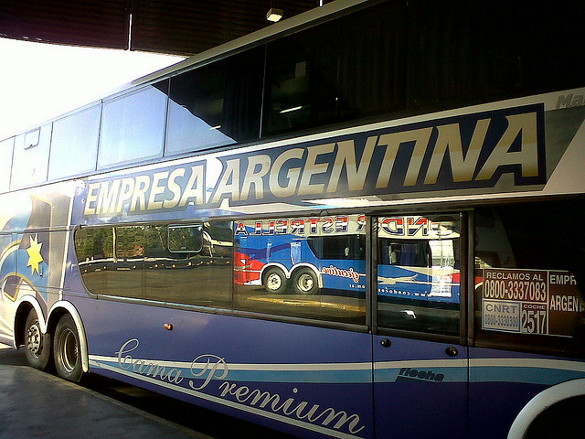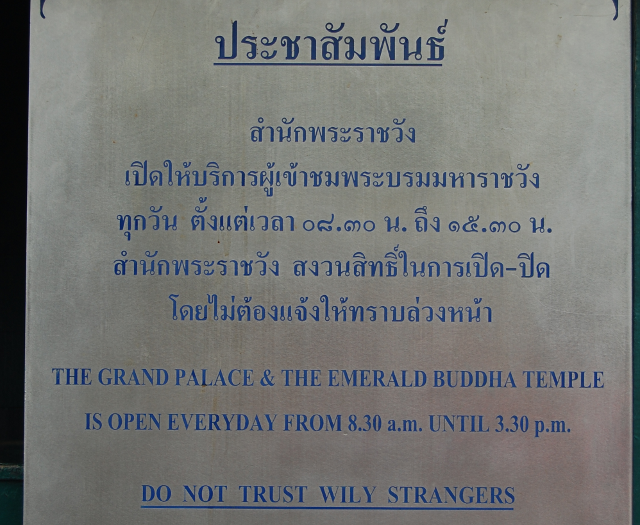
We have taken you through all the myths of long-term travel. While money seems to be the biggest hurdle for travelers embarking on a big, RTW type of trip, safety is another large one that many need to overcome. Because of the world we live in, with the doom and gloom media constantly shoving the dangers of certain destinations down our throats, many seem like a bad idea to visit. Family and friends in turn get worried when travelers inform them of their plans to visit one of these so-called dangerous destinations.
Stories of kidnappings, rapes, and muggings worry many loved ones when we tell them about our trips. While there are certainly places that warrant fear and shouldn’t be visited, the vast majority of destinations long-term travelers visit are perfectly safe.
But just in case you can’t talk mom and dad into believing you’ll be fine, make sure you read this guide and convince those worried about you that you have taken every precaution necessary.
Dangerous destinations
[figure title=”Staying Safe on the Road” description=”Travel tips” src=”https://content.bootsnall.com/rtw/wp-content/uploads/2013/01/Colombia1.jpg”]
It’s difficult to discern whether or not a certain city, country, or region is safe to visit. If you read the warnings from the US State Department, you wouldn’t be able to go anywhere. If you listened to the cable news stations, you would think that most countries are war ravaged wastelands you shouldn’t visit.
And while there are plenty of places in the world where you shouldn’t go, I recommend talking to people who have actually traveled in the places in question. Search for travel blogs or peruse message boards and actually talk to people who are there right now. While Colombia still gets a black mark from some people, if you talk to anyone who has been there in the past decade, you’d hear a completely different tune. Colombia has quickly become one of the most popular destinations in South America, with beautiful landscapes and some of the friendliest people in the world. But if you watch the news or listen to Aunt Martha, you would be scared to hop in a cab from the airport in Bogota for fear of being kidnapped, which is a ludicrous thought.
The smartest thing to do when trying to figure out if a destination is too dangerous to visit is to get in touch with travelers who are there. Who would you rather trust? A traveler who is there right now or a talking head who hasn’t left Washington D.C. for ten years?
Staying safe in big cities
No matter where you are in the world, big cities have crime. Whether it’s New York or Chicago, Mumbai or Delhi, London or Dublin, Bangkok or Hanoi, there is a chance for crime. Taking the proper precautions, whether you’re traveling or at home, is important to remaining safe.
Minimizing the chances of getting mugged
Getting mugged is the most common crime against travelers on the road. Having your guard up at all times is important whenever you’re in a heavily crowded place. Here’s a few tips for remaining as safe as possible when in a big, populated area:
- Don’t carry your big, DSLR camera with you around your neck. You look like a target. Put it in a bag if you want to carry it with you and only take it out to take pictures.
- Don’t get fall down drunk and stumble back to your hostel at 4am. You have a much better chance of getting mugged in that scenario than site-seeing during the day.
- Don’t carry a wallet with you in your front or back pocket. Put your money and/or passport in a money belt. Pickpockets are everywhere in populated cities.
- Don’t carry several credit cards with you at once. Keep some put away in a safe place in your room. If you are staying in a hostel without a safe, then have a good plan on what to do with your most important belongings.
- Don’t be flashy. If you have a big wedding ring, you may want to leave it in a safe deposit box at home and get a different, inexpensive ring for your travels. Same with watches and other expensive, flashy jewelry. Leaving it at home is the smart choice.
- Keep your wits about you at all times. Don’t let your guard down ever. If you’re traveling with someone else, make sure you both keep an eye on each other and each other’s belongings at all times. If you’re traveling solo, then you just have to make sure you don’t have many lapses of concentration.
Staying safe on overland transport

Another place where you can be in a bit of danger is when taking overland transport, particularly when traveling overnight. Buses and trains are the preferred mode of transport for most RTW travelers, and while they are largely safe, you do still have to pay attention to certain things.
You should always keep your most valuable possessions with you. While it is unlikely that anything would happen to a checked bag, it’s still out of site during the entirety of your journey, so putting your expensive laptop, camera, or passport in that bag doesn’t make much sense. Having it in a bag with you, with your eyes on it at all times, is the preferred way of traveling by bus and train.
The second tip is to make sure you have your eyes on that bag at all times. If you have a bunch of expensive or important items with you, pack them in one pack (or split them if you are traveling with a partner), and make sure it’s within view. Some like to put the bag under their seat and wrap the straps around their feet. Some like to put it above their heads (though it’s hard to keep an eye on it, particularly if you fall asleep). Some will keep their bag on their lap the entire journey. Many go the extra distance and buy a luggage security cable and lock and lock their pack to their seat or something else on the bus.
Overnight journeys
If you are traveling overnight by bus or train, it’s a good idea to keep your most valuable possessions somehow tied to you. Whether it’s wrapping the straps around your feet or legs, keeping your pack on your lap, or physically locking it to your seat, it’s a good idea to have it secured for when you’re sleeping. If you are on a train or sleeper bus with beds, then sleeping with your bag is not a bad idea either. Overnight journeys or when travelers are sleeping is when items or bags get stolen most, so taking the proper precautions is necessary.
Common scams

In addition to getting mugged or having something stolen on a bus, you have to get used to common scams all over the world. Every destination has their unique scams, but simply reading up on the culture and safety of that destination beforehand will help out tremendously. I’m always amazed when unsuspecting tourists fall prey to common scams that are mentioned in every single guidebook.
For example, when traveling to Bangkok, if you read up on the city at all, you’ll no doubt read about the tuk-tuk drivers who have been running the same scam for years. Tourists hop into a tuk-tuk to go to the Grand Palace, one of the most famous sites in the city. The tuk-tuk driver then proceeds to tell the tourists that the Grand Palace is closed, but he will be more than willing to take you on a special tour. This special tour will include a temple or two, but it will also include several rug or gem shops, conveniently owned by a friend of the driver who will get a commission for bringing tourists into the shop. It happens every single day, and it’s mentioned in every single guidebook. Do your homework, and you’ll be fine.
Safety is a common concern for many long-term travelers and their loved ones, and rightfully so. By taking just a few precautions, like doing the proper research and keeping your wits about you, you can remain safe for the entirety of your trip.
Check out this short video about the hierarchy of safety from solo travel expert Janice Waugh.
To read more about safety while on the road, be sure to read these articles before taking off on your big trip:
- ATM Skimmers: What They Are, How to Spot Them, How to Protect Yourself
- A Travel Insurance Interview: Do You Really Need It?
- 7 Common Travel Disasters: How to Avoid Them and What to Do if One Happens to You
- RTW Safety Tips
- How to Safely Travel Solo on Your Career Break (has links to lots of great safety related blog posts from other solo travelers)
